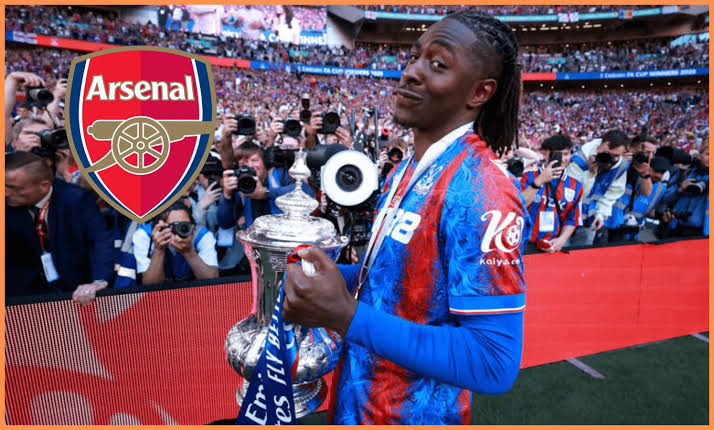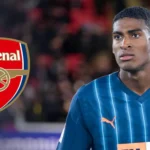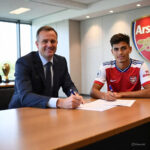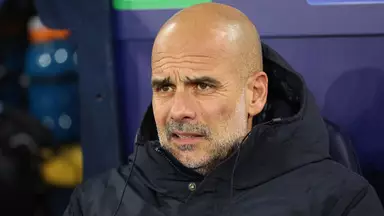Arsenal’s Strategic Pursuit of Eberechi Eze: A Comprehensive Analysi

As the summer transfer window reaches its crucial final weeks, Arsenal Football Club finds itself in a fascinating position. Having already secured significant signings in Viktor Gyokeres and Cristhian Mosquera during their pre-season tour of Asia, the Gunners are far from finished with their recruitment drive. The north London club’s ambitious approach to the transfer market reflects their determination to compete at the highest level, both domestically and in European competition.
The modern transfer market has become increasingly complex, with Financial Fair Play regulations, release clauses, and player power all playing significant roles in how deals are structured and completed. Arsenal’s pursuit of Crystal Palace’s Eberechi Eze represents a masterclass in strategic negotiation, demonstrating how top clubs can secure premium talent without necessarily paying premium prices
Eberechi Eze has emerged as one of the Premier League’s most exciting attacking talents over recent seasons. The Crystal Palace playmaker combines technical brilliance with physical attributes that make him ideally suited to the demands of top-level football. Standing at 5’10”, Eze possesses the pace to trouble any defense, the skill to unlock tight spaces, and the vision to create opportunities for teammates.
His journey to prominence has been anything but conventional. After spells in non-league football with Millwall Reserves and a loan to Wycombe Wanderers, Eze’s talent was eventually recognized by Queens Park Rangers in the Championship. His performances in west London caught the attention of Crystal Palace, who secured his services in 2020 for a fee that now looks like an absolute bargain.
Since arriving at Selhurst Park, Eze has consistently demonstrated his ability to influence matches at the highest level. His versatility allows him to operate across multiple positions in the attacking third, whether as a traditional winger, a central attacking midfielder, or even as a false nine when tactical situations demand it. This adaptability makes him particularly attractive to Arsenal manager Mikel Arteta, who values players capable of interpreting multiple roles within his tactical system.
The statistics surrounding Eze’s recent performances make for compelling reading. His ability to carry the ball forward, create chances for teammates, and contribute goals from various positions has marked him out as one of the Premier League’s most complete attacking players. His work rate without the ball also aligns perfectly with Arsenal’s high-intensity pressing system, making him an ideal fit for Arteta’s tactical philosophy.
Mikel Arteta’s tenure as Arsenal manager has been characterized by a methodical approach to squad building that prioritizes both immediate impact and long-term potential. The Spanish tactician has consistently demonstrated his ability to identify players who can enhance the team’s tactical flexibility while maintaining the high standards required to compete for major honors.
The pursuit of Eze represents a continuation of Arsenal’s recent transfer strategy, which has focused on securing players in their prime years who can make immediate contributions while retaining significant resale value. This approach has served the club well in recent windows, with signings like Declan Rice, Kai Havertz, and Jurrien Timber all fitting this profile.
Arteta’s comments regarding the club’s transfer activity reveal a manager who remains ambitious despite already strengthening key areas of the squad. His acknowledgment that “there’s still a long period still with the window open” suggests that Arsenal’s hierarchy has provided him with the resources and flexibility to pursue additional targets should the right opportunities arise.
The manager’s emphasis on being “extremely happy with the way that we have approached the window and how aggressive we have been” reflects a club that has learned from previous transfer mistakes. Arsenal’s historical tendency to be reactive rather than proactive in the transfer market appears to be a thing of the past, replaced by a more strategic and forward-thinking approach.
The financial aspects of the Eze transfer represent one of the most intriguing elements of this potential deal. The player’s release clause, understood to be £67.5 million, initially appeared to set a clear benchmark for any potential transfer. However, Arsenal’s decision not to activate this clause demonstrates a sophisticated understanding of modern transfer dynamics.
Release clauses, while providing certainty for selling clubs, often represent the maximum value a player might command rather than their true market value. Arsenal’s strategic decision to pursue negotiations rather than trigger the clause suggests confidence in their ability to secure Eze for a more reasonable fee while still satisfying Crystal Palace’s valuation.
The reported target range of £50-60 million represents significant value in today’s inflated transfer market. When compared to recent deals for players of similar age and potential – such as the £55 million Tottenham paid for Mohammed Kudus, or similar fees for Jamie Gittens and Anthony Elanga – Arsenal’s potential acquisition of Eze would represent exceptional business.
UEFA’s Financial Fair Play regulations have fundamentally altered how clubs approach major signings. Arsenal’s careful navigation of these restrictions demonstrates institutional learning from their previous financial difficulties. The club’s ability to structure deals in ways that satisfy regulatory requirements while still securing top talent represents a significant competitive advantage.
Crystal Palace’s insistence on at least £35 million upfront reveals their own financial considerations. The Eagles, while stable, do not possess the financial resources of England’s traditional top six clubs. This upfront payment requirement likely reflects their need to reinvest immediately in squad strengthening, creating a win-win scenario if negotiations prove successful.
From Crystal Palace’s perspective, the potential departure of Eberechi Eze represents both a significant loss and a crucial opportunity. The player has been instrumental in the club’s recent Premier League campaigns, often single-handedly changing the outcome of matches through moments of individual brilliance.
However, Crystal Palace’s realistic assessment of their position in football’s hierarchy suggests they understand that retaining a player of Eze’s caliber indefinitely may prove impossible. The inclusion of a release clause in his contract demonstrates forward-thinking from the club’s hierarchy, ensuring they receive appropriate compensation should larger clubs come calling.
The Eagles’ reported asking price of at least £35 million upfront reflects both the player’s value and their own need for immediate financial injection. This requirement suggests they have already identified potential replacements and want to ensure they can move quickly to secure alternatives before the transfer window closes
Manager Oliver Glasner faces the challenging task of potentially replacing irreplaceable talent. However, Crystal Palace’s recent history suggests they possess the scouting network and tactical flexibility to adapt to such departures. Their ability to consistently identify and develop talent has become a hallmark of their operations under various managers.
Mikel Arteta’s tactical system at Arsenal has evolved significantly since his appointment, developing into a fluid, possession-based approach that emphasizes positional interchangeability among attacking players. Eberechi Eze’s skill set appears tailor-made for this system, offering the technical ability and tactical intelligence to thrive in multiple roles.
Arsenal’s current attacking setup typically features wide players who can drift infield to create overloads in central areas while fullbacks provide width. Eze’s comfort operating in these inside channels, combined with his ability to beat defenders in one-on-one situations, would add a new dimension to Arsenal’s attacking play.
The player’s pressing intensity and work rate without the ball align perfectly with Arsenal’s high-energy approach. Arteta demands that all attacking players contribute defensively, and Eze’s willingness to track back and press from the front would make him an immediate fit within the existing system.
His creativity from deep positions could prove particularly valuable in matches against defensively organized opponents. Arsenal have occasionally struggled to break down teams that sit deep and defend in numbers, and Eze’s ability to create chances from seemingly impossible positions could provide the unpredictability needed to unlock such defenses
The contemporary transfer market has been characterized by increasingly inflated fees, particularly for young players with potential rather than proven quality at the highest level. Arsenal’s potential acquisition of Eze must be viewed within this context to fully appreciate the strategic value of such a deal.
Recent transfers involving similar players provide valuable benchmarks for assessing Eze’s potential fee. Mohammed Kudus’s £55 million move to Tottenham represents payment for a player with international experience but limited Premier League exposure. Jamie Gittens’s similar valuation reflects the premium placed on young English talent with significant upside potential.
Anthony Elanga’s Newcastle move for comparable money demonstrates how clubs are willing to pay premium fees for players who have shown flashes of brilliance but lack the consistent output that Eze has demonstrated over multiple seasons. In this context, securing Eze for a fee in the £50-60 million range would represent exceptional value.
The market for attacking players has been particularly inflated in recent windows, with clubs desperate to add creativity and goal threat to their squads. Arsenal’s ability to potentially secure a player of Eze’s proven quality and consistency for less than many clubs are paying for potential represents shrewd business in the extreme.
From Eberechi Eze’s perspective, a potential move to Arsenal represents the natural next step in his career progression. Having established himself as one of Crystal Palace’s key players and proven his ability at Premier League level, the opportunity to test himself at a higher level of competition would be extremely appealing.
Arsenal’s recent trajectory under Mikel Arteta makes them an attractive destination for ambitious players. Their return to Champions League football, combined with their evident progress in domestic competitions, suggests a club moving in the right direction. For a player of Eze’s age and ambition, joining such a project at the right time could prove career-defining.
The reported agreement on personal terms suggests that Eze himself is enthusiastic about the prospect of joining Arsenal. This willingness to move, combined with his proven Premier League experience, would eliminate many of the risks typically associated with high-value transfers.
Playing alongside established internationals like Bukayo Saka, Martin Ødegaard, and Declan Rice would provide Eze with the platform to showcase his abilities on the biggest stages. The quality of players around him at Arsenal would likely elevate his own performance levels, creating a positive feedback loop that benefits both player and club
The pursuit of Eze fits perfectly within Arsenal’s broader transfer strategy under Arteta and sporting director Edu. The club has consistently targeted players who combine immediate ability with long-term potential, creating a squad capable of competing now while retaining significant value for the future.
This approach represents a marked departure from Arsenal’s previous transfer philosophy, which often involved either expensive gambles on unproven talent or short-term fixes that provided little long-term value. The current strategy demonstrates institutional learning and a more sophisticated understanding of squad building in the modern era.
The emphasis on character and mentality in Arsenal’s recent signings suggests that Eze’s professional attitude and work ethic have been thoroughly evaluated. His journey from non-league football to Premier League stardom demonstrates exactly the kind of hunger and determination that Arteta values in his players
Arsenal’s financial approach to transfers has also evolved significantly, with the club now willing to invest substantial sums when convinced of a player’s fit within their system. However, their refusal to overpay, as demonstrated by their approach to Eze’s release clause, shows they have learned valuable lessons about value and sustainability
Arsenal’s pursuit of Eze must be understood within the context of their broader competitive ambitions. Having finished second in the Premier League in consecutive seasons, the club clearly believes they are close to ending their title drought. Adding a player of Eze’s quality could provide the additional creativity and unpredictability needed to get over the line.
The competitive landscape in English football has never been more demanding, with Manchester City setting unprecedented standards and other top clubs strengthening significantly. Arsenal’s recognition that they need to continue improving to remain competitive demonstrates a realistic assessment of their position.
Eze’s addition would provide tactical flexibility that could prove crucial in different competitions. His ability to change games as a substitute, adapt to different tactical systems, and perform in high-pressure situations would enhance Arsenal’s options across all competitions
The psychological impact of securing such a high-profile signing should not be underestimated. For a club seeking to establish itself among England’s elite, attracting proven Premier League talent from rival clubs sends a clear message about their ambitions and capabilities.
UEFA’s Financial Fair Play regulations have fundamentally altered how clubs approach major transfers, requiring careful planning and creative structuring to remain compliant. Arsenal’s approach to the Eze deal demonstrates sophisticated understanding of these requirements and their implications.
The club’s preference for negotiating a fee rather than triggering the release clause likely reflects FFP considerations as much as financial prudence. Spreading payments over multiple years and including performance-related add-ons can help clubs manage their annual expenditure while still securing top talent.
Arsenal’s recent financial management has been exemplary, with the club returning to profitability and maintaining compliance with all regulatory requirements. This financial stability provides the foundation for ambitious transfer activity while ensuring long-term sustainability.
The structured approach to major signings also reflects lessons learned from other clubs’ FFP difficulties. Arsenal’s careful management of their transfer budget demonstrates institutional wisdom that serves them well in an increasingly regulated environment.
Arsenal’s pursuit of Eberechi Eze represents everything positive about modern transfer strategy: careful identification of suitable targets, realistic financial planning, and patient negotiation to achieve optimal outcomes. Should the deal come to fruition, it would represent a significant coup for all parties involved.
For Arsenal, securing a player of Eze’s proven quality and versatility for a fee below his release clause would demonstrate the effectiveness of their current transfer approach. The player’s age, ability, and character profile make him an ideal addition to Arteta’s squad as they seek to challenge for major honors.
From Eze’s perspective, the move would represent the natural progression in his remarkable career journey. The opportunity to test himself at the highest level while working under one of football’s most promising young managers would be difficult to refuse.
Even Crystal Palace, despite losing a key player, would benefit from receiving a substantial fee that allows them to reinvest in squad strengthening. Their approach to player development and smart contract management ensures they are appropriately compensated for nurturing such talent.
The deal’s broader implications extend beyond the immediate parties involved, demonstrating how strategic thinking and patient negotiation can achieve better outcomes than reactive spending. Arsenal’s approach to this transfer could serve as a blueprint for other clubs seeking to maximize their transfer budget effectiveness.
As the summer transfer window enters its final phase, Arsenal’s pursuit of Eberechi Eze represents one of the most intriguing potential deals remaining. Should it come to fruition, it would cap off what has already been an impressive window for the Gunners while providing them with additional tools to challenge for the honors their supporters crave.
The modern transfer market rewards clubs that combine ambition with intelligence, patience with decisiveness, and financial resources with strategic thinking. Arsenal’s pursuit of Eze demonstrates all these qualities, suggesting a club that has learned valuable lessons and positioned itself for sustained success in the years ahead.














